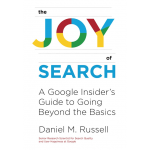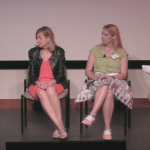Is it a parrot, or a parakeet, or…
C. c. ludovicianus by John James Audubon. This is the blue subspecies variant of the green/yellow Carolina Parakeet (C. c. carolensis) P/C Wikimedia.
Last week’s Challenge was pretty straightforward:
1. …the Carolina Parakeet, can you find a drawing (or etching or painting) that was done from life? (And yes, I know about the painting in the Wikipedia article. Can you find something OTHER than that?)
I was fascinated by the comments we got about HOW people did their search. Thanks to all who wrote in.
Full disclosure: here’s what I did…
The straightforward search was:
[ Carolina parakeet “from life” ]
and then wander through the images looking for plausible leads. In looking through this collection of results:
I quickly learned a couple of things:
1. the artist Mark Catseby (1682-1749) drew “The Parrot of Carolina and the Cypress of America” c.1722-6. While he was a great collector and he certainly saw live Carolina parakeets, it’s unclear if his illustration (see below) was from life… (This image is a fairly low-res version: you can see a beautiful high-res version here, at the Royal Collection.)
 |
| Mark Catseby (c. 1772) |
2. This bird is also called the Carolina Parrot, which, when you search for it in the manner above, leads to the OTHER Wikipedia image of the Carolina Parrot.
 |
| John James Audubon (1833) “from life.” P/C Wikimedia. |
I figured that John James Audubon (the famous American bird illustrator of the 19th century) probably had done a sketch (or two, or dozens) of this bird. So the simplest search would be to search for Carolina parakeet in Google Books with the date filter set to BEFORE 1918.
I did this… and redid this search multiple times–to no avail! I know Audubon wrote and illustrated a multi-volume work called “Birds of America,” and as we see in the above illustration, we KNOW that he painted them at least once, so it was peculiar to not find this in Google Books.
However, once I noticed that the bird was also called the “Carolina Parrot,” a search in Google Books for [ “Carolina Parrot ] quickly led me to Birds of North America, Volume 4 (page 306), wherein one finds this image:
 |
| Audubon, “Birds of North America, Volume 4” p. 306 |
Two things to note here:
First, the Latinate name is, according to Audubon, Centurus carolinensis. Today, of course, it’s Conuropsis carolinensis. (Which explains why searching for Conuropsis carolinensis in the works of Audubon didn’t work either–he never knew it by that name, nor wrote about it.) Nor did he call it the “Carolina Parakeet” — he called it either the “Caroline Parrot” OR the “Carolina Parrakeet.” Synonyms are great, but they’re not perfect substitutes!
Second, in the lower left corner is the notation: “Drawn from nature by J.J. Audubon FRSFLS.” Now, we know that “from nature” is about as close to “from life” as Audubon is going to get. As we read in the article, Drawn from Nature, by Laura Harbold,
He spent hours observing birds in their natural habitats, then shot them, using scatter pellets to lessen the damage to their bodies. For Audubon, Eldridge says, “a bird was like a rose. You admired the color, you admired the fragrance, and you picked it without much emotional reaction.”Audubon pinned his specimens to a wooden grid, arranging their wings, tails, and heads in lifelike positions. Using a duplicate grid, he sketched the birds exactly to scale, reproducing each feather to the smallest detail.
And that’s what I did to find the Carolina Parakeet (aka Parrot, aka Parrakeet, depending on the source).
Again, thanks to everyone who wrote in with their solution paths.
SearchResearch Lessons
1. “From life” wasn’t such a great search term. I didn’t know that Audubon (and others) said “from nature”! And, more generally…
2. Sometimes you need an exact match of the search term! Luckily, I noticed that some writers referred to “Carolina Parrot” and I was able to use that term to search in Google Books (and other sources).
3. Looking around (and reading widely) is the best way to zero in on your search target. Search skills are great, but reading broadly, often using lateral browsing, is a great way to find what you see by learning a bit about the topic area.
Search on!






